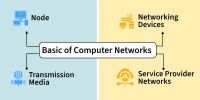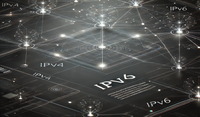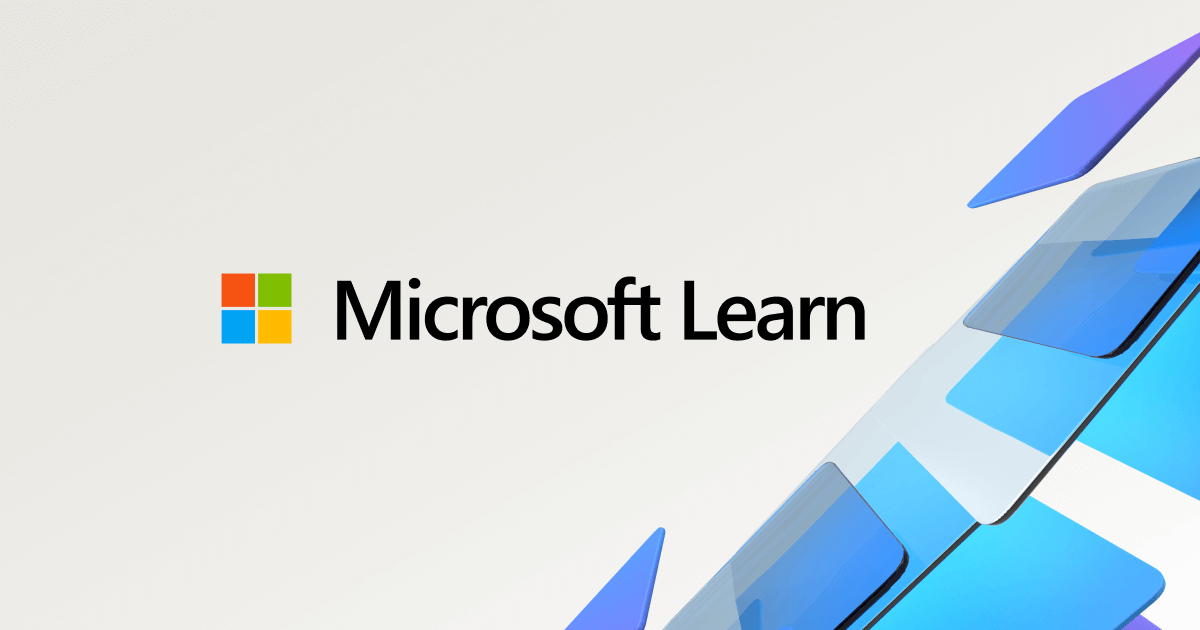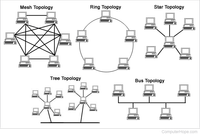Explore web search results related to this domain and discover relevant information.

It can be a moment to make genuine connections. Here’s how to get started: Networking is not about meeting new people. It’s also a chance to connect with people you’ve known for a while but haven’t had the chance to interact with. Use networking as an opportunity to help others.
Networking doesn’t have to feel opportunistic. It can be a moment to make genuine connections. Here’s how to get started: Networking is not about meeting new people. It’s also a chance to connect with people you’ve known for a while but haven’t had the chance to interact with.When I was in college, networking seemed transactional. I disliked the idea of building relationships for my own personal gain and small talk with strangers triggered my social anxiety. As I’ve grown in my career, however, I’ve learned that networking doesn’t have to be opportunistic.
7+ Hours of Video Instruction There are many elements to a networking system, including hosts, virtual hosts, routers, virtual routers, routing protocols, discovery protocols, etc.... - Selection from How Networks Really Work [Video]
Each protocol and device (whether virtual or physical) is generally studied as an individual “thing.” It is not common to consider all these parts as components of a system that works together to carry traffic through a network. To show how all these components work together to form a complete system, this video course presents a series of walk throughs showing the processing involved in various kinds of network events, and how control planes use those events to build the information needed to carry traffic through a network.One of the foremost internetworking experts, Russ White leverages his decades of experience in building and troubleshooting large scale networks at the likes of Cisco, LinkedIn, and Juniper to present you with a proven methodology that will help you understand why and how networking technologies work.In addition to providing a solid overview of many common protocols and solutions, this valuable insight helps you develop the ability to understand why you should make particular implementation decisions and what the tradeoffs are in each situation, enhance your troubleshooting skills by understanding how each technology works and what problems might arise with any solution, and finally to quickly understand new technologies as they are released by relating them to previously developed technologies. The course begins with the discovery of the information a host needs to send traffic and the forwarding process within a network device.This lesson will explore the concept of abstraction in network control planes. Two specific kinds of abstraction will be considered, summarization and aggregation, and the tradeoffs involved in removing information through abstraction thought through. Lesson 4: Control Plane Examples Understanding the theory behind how to discover the network’s topology and reachable destinations is important, but how are these things implemented in real protocols?

Today, artificial intelligence ... help automate network management, enhance security through anomaly detection, and optimize performance by predicting and responding to traffic patterns in real time. Using email as a basic example, here’s how data moves through a ...
Today, artificial intelligence (AI) and machine learning (ML) are further transforming networking by enabling smarter, more adaptive systems. These technologies help automate network management, enhance security through anomaly detection, and optimize performance by predicting and responding to traffic patterns in real time. Using email as a basic example, here’s how data moves through a network.Switches: A switch is a device that connects network devices and manages node-to-node communication across a network, ensuring that data packets reach their intended destinations. Unlike routers, which send information between networks, switches send information between nodes within a network. Therefore, “switching” refers to how data is transferred between devices on a network.Gateways: Gateways are hardware devices that facilitate communication between two different networks. Routers, firewalls and other gateway devices use rate converters, protocol translators and other technologies to facilitate internetwork communication between otherwise incompatible devices. ... Behind every responsive, AI-ready cloud is an infrastructure built for speed, scale, and simplicity. See how IBM Power is designed to handle data-intensive AI and networking — so you can focus on outcomes, not IT complexity.While traditional networking components (for example, routers, switches, ports, gateways) remain foundational to network operations, cloud environments have transformed how these elements are deployed and managed.

The Cisco CCNA is the worlds premier networking certification. You learn security, TCP/IP, wireless, automation, troubleshooting and more. Live Cisco equipment included and practice exams. ... Learn how to build end-to-end solutions in Microsoft Azure to create Azure Functions, implement and ...
The Cisco CCNA is the worlds premier networking certification. You learn security, TCP/IP, wireless, automation, troubleshooting and more. Live Cisco equipment included and practice exams. ... Learn how to build end-to-end solutions in Microsoft Azure to create Azure Functions, implement and manage web apps, develop solutions utilizing Azure storage, and more.We offer courses for complete beginners to advanced level and training for cloud engineers, network technicians, project management or network security. ... If you are looking to get ahead in the world of IT or make a career change into the most exciting and challenging industry you are in the right place. “I used howtonetwork to get my CCNA.After several years I finally decided to go after my CCNA. After hunting for online IT training, I found howtonetwork.com. It was tough but after two months I had both by CCENT and my CCNA. As a result of obtaining those certifications, I was hired as a network engineer at a local logistics company.On January 2nd of 2016 I moved to a new role within Dell as a Global Principal Architect for Networking.” ... “I was trying to enter into the IT field but with no formal schooling, I didn't stand a chance. I started down the Certification road. Passed two Microsoft exams, landed my first IT job. Since I joined www.howtonetwork.com, obtained 3 Certifications (A+, Network+, VCA-DCV) which followed with a 8% raise and a 6% end of year bonus.


This section focuses on the physical aspects of data transmission, which is the very foundation of network communication. We will look into different network layouts (topologies), how data signals travel across various media and the modes used for transmission.
This subsection focuses on IP address management, specifically explaining the important technique of subnetting. We will discover how to effectively split larger networks into smaller, more manageable subnets and calculate address ranges using subnet masks.It also covers advanced topics like Variable Length Subnet Masking (VLSM) for optimized network division. ... Routing is how data finds its path across complex networks in this part.This section covers some of the key protocols used at the Network Layer. We'll look at how devices find each other on a network using ARP, how they check for issues using ICMP and how they get IP addresses automatically through DHCP.We will also get an introduction to common dynamic routing protocols like RIP, OSPF and BGP, which help networks talk to each other and keep data flowing smoothly. ... In this section, we will find out how applications communicate reliably over a network.

A protocol is a set of rules or algorithms which define the way how two entities can communicate across the network and there exists a different protocol defined at each layer of the OSI model.
A firewall is a network security device either hardware or software-based which monitors all incoming and outgoing traffic and based on a defined set of security rules it accepts, rejects, or drops that specific traffic .An interconnection of multiple devices, also known as hosts, that are connected using multiple paths for the purpose of sending/receiving data or media. Computer networks can also include multiple devices/mediums which help in the communication between two different devices; these are known as Network devices and include things such as routers, switches, hubs, and bridges.A computer network is a collection of interconnected devices that share resources and information. These devices can include computers, servers, printers, and other hardware.Networks allow for the efficient exchange of data, enabling various applications such as email, file sharing, and internet browsing.
A quick search of someone's background before you meet them will help you find meaningful points of connection.
I’ve never been comfortable with the notion of networking, at least in the conventional sense of the word. I’m an introvert, and I haven’t been able to figure out the art of moving in and out of conversations during, say, the cocktail hour at a conference.If it would broaden my skills as a journalist (earlier in my career) or if I would learn more about leadership (the current chapter of my career), my default was and is to say yes. I figured I’d learn something new and perhaps expand my network, and I’ve now got enough years under my belt to see the benefit of playing in traffic.“When you talk about getting to the most senior levels, it’s less about the work and more about the network and your impact and how you market and brand what you’re working on,” said Mary Elizabeth Porray, global deputy vice chair for client technology for EY, the consulting firm.
This article discusses what the Internet is and how it works. The Internet is the backbone of the Web, the technical infrastructure that makes the Web possible. At its most basic, the Internet is a large network of computers which communicate all together.
How does the Internet work? Detailed well visualized 9-minute video. When two computers need to communicate, you have to link them, either physically (usually with an Ethernet cable) or wirelessly (for example with Wi-Fi or Bluetooth systems). All modern computers can sustain any of those connections. Note: For the rest of this article, we will only talk about physical cables, but wireless networks work the same.And you can't have just a tree of switches, because then a single switch failure may disconnect a large portion of devices. To solve this problem, we keep each local network as small as possible, and we connect these local networks using a separate device called a router. A router is a computer that knows how to forward messages between networks.To solve this problem, each computer on a network is connected to a special tiny computer called a network switch (or switch for short). This switch has only one job: like a signaler at a railway station, it makes sure that messages sent from a given computer arrive only at their target destination computer.To send a message to computer B, computer A sends the message to the switch, which in turn forwards the message to computer B — computer B doesn't get messages intended for other computers, and none of the messages for computer B reach other computers on the local area network.
A network server is a computer that stores and manages data and applications for computers on a network. Here are their primary features and functions.
From small local networks in a business setting to vast cloud-based infrastructures, network servers are the lynchpin that keeps the wheel of information and services turning smoothly. They enable the centralization of data and applications, making it easier to manage, maintain, and secure critical organizational assets. In this article, we will explore how network servers work, their key types, and how they are evolving.We will also show you how to create a basic network server and dive into the main use cases.Network servers function as the central hub in a computer network, managing communication and data exchange between different devices. Here’s a breakdown of how they operate:A network server is a powerful computer engineered to manage network resources and provide services to other computers, known as clients, in a network setting.


Learning how to network increases the number of people you know professionally and may open you up to new opportunities. These networking tips may help develop your business relationship skills.
Video: Networking Tips to Build Your Network in Strategic & New Ways! This video offers 7 strategic networking tips that you can use no matter what stage you are at in your career.Knowing how to network can help you create new career advancement opportunities.Business networking is the process of meeting others to exchange information, make new professional contacts and create helpful relationships. These relationships are useful when you are looking for a new job, to develop your skills or to increase your industry knowledge. You can connect with someone who works in the same field or company you’re interested in, or who could provide you with a reference or client in the future. Knowing how to network professionally will make it easier and faster for you to form valuable connections.You may tend to go to the same type of networking events where you already know many of the attendees. However, it may be beneficial to attend other events, where you can meet new people and diversify your interests.There are many sources online for finding new networking events.When preparing for a networking event, rehearse responses to common questions you might encounter when you speak to new people, such as, “Tell me about yourself,” or “How long have you been in the industry?” Having an answer ready will ensure your delivery is smooth.

Discover how networks work step by step, from IP addressing to routing, NAT, and firewalls, with clear explanations and examples.
However, this Private IP can’t directly access the internet or send requests to external servers. Instead, your request must first go through the Public Network IP, which acts as the intermediary responsible for handling and routing requests to external servers.With all possible combinations, IPv4 can generate 4,294,967,296 unique addresses. However, not all of them are available for public use. Some ranges are reserved for private networks, while others are allocated for specific purposes, such as multicast or loopback addresses.To make this work, the NAT (Network Address Translation) maps your device’s Private IP and the port used to send the request to the Public Network IP with a new port. This ensures that the router, which handles both internal and external device connections, can differentiate between multiple devices sending requests.This mapping is stored in the NAT Table, allowing the router to track the traffic’s path. When the external server responds, NAT uses this mapping to route the incoming packets back to the correct device within the internal network.
It’s likely that, at one time or another, the person you are networking with was a college student, just like you. Asking for advice never hurts. Get insight from someone who has been through the same process as you. People usually like to be asked for help – it means that you value their ...
It’s likely that, at one time or another, the person you are networking with was a college student, just like you. Asking for advice never hurts. Get insight from someone who has been through the same process as you. People usually like to be asked for help – it means that you value their opinion and see them as a good source of information.Making connections online can be an effective networking strategy. LinkedIn, Twitter, blogs, and other social media sites offer great ways to learn insider information about your career path and connect with individuals and professional associations.Clean up your online identity by setting accounts on social networking sites, like Facebook, to private and/or removing questionable material, such as blog entries, photos, quotes, comments and applications. Be sure to present a positive online image.The networking process does not end when the career event or job fair is over. Be sure to give and receive contact information. Following up with your network continues the relationships and preserves those connections.


Network protocols ensure smooth communication between the different components in a network. They control data exchange and determine how communication is established and terminated as well as which data is transmitted.
Hubs are becoming less common in the construction of networks. For various reasons, these network devices are being replaced by the more modern switches. Nevertheless, it pays to know about them. In this article, you can learn what a hub is, how it works, and what advantages and…Networks are usually divided into different network types according to transmission type and range, that is, depending on how or how far the data is transmitted.Dividing a corporate network into smaller subnets has some advantages in terms of speed, security, and logical organization. However, many people find it difficult to set up.Networks are all-pervasive in IT. They also shape our everyday lives and corporate environments. But what is a network exactly? We’ll explain using examples.
What does 'Internet' mean, and how does it work? Explore how the Internet works and how computer networks across the globe can connect to each other.
The Internet's distributed nature makes it resilient. Computers, servers, and other pieces of networking hardware connect and disconnect from the Internet all the time without impacting how the Internet functions — unlike a computer, which may not function at all if it is missing a component.In networking, a packet is a small segment of a larger message. Each packet contains both data and information about that data. The information about the packet's contents is known as the "header," and it goes at the front of the packet so that the receiving machine knows what to do with the packet. To understand the purpose of a packet header, think of how some consumer products come with assembly instructions.The packets get routed to their destination by various networking devices such as routers and switches. When the packets arrive at their destination, the receiving device reassembles the packets in order and can then use or display the data. Compare this process to the way the United States' Statue of Liberty was constructed. The Statue of Liberty was first designed and built in France. However, it was too large to fit onto a ship, so it was shipped to the United States in pieces, along with instructions about where each piece belonged.However, the Internet does not always work as well as it should. Networking issues and malicious activity can slow down Internet access or block it altogether. Third parties can spy on user activities, leading to abuse and, in some cases, government repression.


Identify common interests. Consider how your goals align with those of people you meet, and networking will feel more authentic. Think broadly about what you can give. Remember that you have something valuable to offer, whether it’s knowledge, gratitude, or recognition.
“I hate networking.” It’s a familiar refrain. But in today’s world, networking is a necessity—and fortunately, an aversion to it can be overcome. Drawing on laboratory experiments and on studies at a large law firm, the authors have identified four strategies that can help people become more excited about and effective at building relationships: Focus on learning.Tiziana Casciaro is a professor of organizational behavior and HR management and holds the Marcel Desautels Chair in Integrative Thinking at the University of Toronto’s Rotman School of Management. She is the co-author of Power, for All: How It Really Works and Why It’s Everyone’s Business (Simon & Schuster, 2021). ... Read more on Professional networks or related topics Career planning and Personal strategy and style“I hate networking.” We hear this all the time from executives, other professionals, and MBA students. They tell us that networking makes them feel uncomfortable and phony—even dirty.
It can be a moment to make genuine connections. Here’s how to get started: Networking is not about meeting new people. It’s also a chance to connect with people you’ve known for a while but haven’t had the chance to interact with. Use networking as an opportunity to help others.
Networking doesn’t have to feel opportunistic. It can be a moment to make genuine connections. Here’s how to get started: Networking is not about meeting new people. It’s also a chance to connect with people you’ve known for a while but haven’t had the chance to interact with.When I was in college, networking seemed transactional. I disliked the idea of building relationships for my own personal gain and small talk with strangers triggered my social anxiety. As I’ve grown in my career, however, I’ve learned that networking doesn’t have to be opportunistic.


In short, computer networking is important because it makes global communication possible. While it is great that you can communicate and share resources due to the power of networking, you must also understand how the network enables you to accomplish these tasks.
What is Networking? Networking can be understood in two main concepts: 1) the process of... Tagged with network, cybersecurity, cisco, beginners.Networking can be understood in two main concepts: 1) the process of connecting or building relationships with people to exchange information and opportunities, and 2) the process of connecting computers to exchange data and resources. Both of these concepts sound very similar, even though one has to do with people and the other is concerned with computers or devices.This is because, in a network (be it person-to-person or computer-to-computer), there are two main actions we can't ignore: connection and exchange of information. Without these two actions in place, we can't have a network.The reason you can open YouTube on your phone and watch your favorite music videos is that a network has been established, which means there is a connection and there is an exchange of information between your phone, the router, the Internet Service Provider, and YouTube's server.
You can vote on whether it's helpful, but you can't add comments or replies or follow the question. ... Hi , Lindsay. I am Ivan, I will help you with this. Go to the start menu > settings > network and internet > ethernet or wifi network > select Private mode.
I've had difficulty over a long period setting up a simple home network for 2 computers that are connected to the same wifi modem. I followed the instructions at · https://answers.microsoft.com/en-us/windows/forum/all/how-do-i-connect-two-2-desktop-windows-10-pcs-to/d20132fc-dc2e-4582-a13e-3b2d51481c20 but that did not seem to help.This is the error message -- how do I get around this? Windows for home | Windows 10 | Files, folders, and storage · Windows for home | Windows 10 | Files, folders, and storage ... Locked Question. This question was migrated from the Microsoft Support Community. You can vote on whether it's helpful, but you can't add comments or replies or follow the question. ... Hi , Lindsay. I am Ivan, I will help you with this. Go to the start menu > settings > network and internet > ethernet or wifi network > select Private mode.Then go back to the previous menu and select advanced network settings > advanced sharing settings. ... File and printer sharing. ... Share public folders. Uncheck Password protected sharing. You configure the two computers according to the above procedure. Then Access the control panel, go to the Account and Users tab > Credential Manager > Windows Credential. Look for any Credentials on both computers. ... Ivan, I appreciate your help. However, may I suggest that it really helps enquirers if you provide a step-by-step explanation using the correct headings and labels.Then I used File Explorer to look at each drive on each computer (DELL2 has C, D, E, F while PFG has C, E, F) > Properties > Sharing > Advanced Sharing > tick Share this folder> Permissions > tick Allow x3. I then restarted both computers but still get the Network Error message for each drive on the other computer. How do I resolve this?


The image below contains geometric depictions of the aforementioned network topologies. Devices are represented as vertices, and their connections are represented as edges on the graph. These examples show how many connections each device has and their respective order and hierarchy.
Availability of information - One of the biggest advantages of networks is their ability to share enormous amounts of data locally and globally at the speed of light. Networks fundamentally changed how we transmit and receive information, increasing how quickly it's available to us.Vulnerabilities - When a network is created, it can introduce new ways that devices can be accessed remotely, especially when the network is connected to the Internet. These connections can be considered vulnerabilities when not properly secured, updated, or managed. ... If you're concerned about online privacy and safety, see our page: How to protect yourself while on the Internet.One of the first computer networks to use packet switching, ARPANET was developed in the mid-1960s and is the direct predecessor of the modern Internet. The first ARPANET message was sent on October 29, 1969. How to set up a home network.Basic network troubleshooting. How to use ping, winipcfg, and other network commands.
35 votes, 105 comments. The majority of answers to the question of 'How to I get SWE job?' tend to be: projects and networking. While I have a very…
If you where in a similar situation, how did you approach it? Any advice would be extremely useful, thanks. Share ... A common misconception is that "networking" means cold messaging recruiters, or messaging strangers on LinkedIn, or talking to someone on Reddit, or going to some tech meetup where you shake hands and exchange business cards with other desperate SWE's.Networking is making friends. The reason meetup is a great way to "network" is because it's a great way to make friends. You're going to an event full of people that you have something in common with, you all enjoy the topic of the meetup. That's how friendships are formed.I went to open events for pickleball and took arts & crafts classes. Once you get your foot off the ground and make some friends, you’ll naturally expand your friends/social/network social. I added some of my friends on LinkedIn. ... How would you find these kinds of events?Networking comes naturally when you're social and put yourself in positions where you can come in contact with others in the industry. When you're working or in school, that typically means building up a rapport with colleagues/classmates. You can also attend meetups, events or even just through unrelated hobbies (I got a job interview and offer from someone in my rec sports league).







